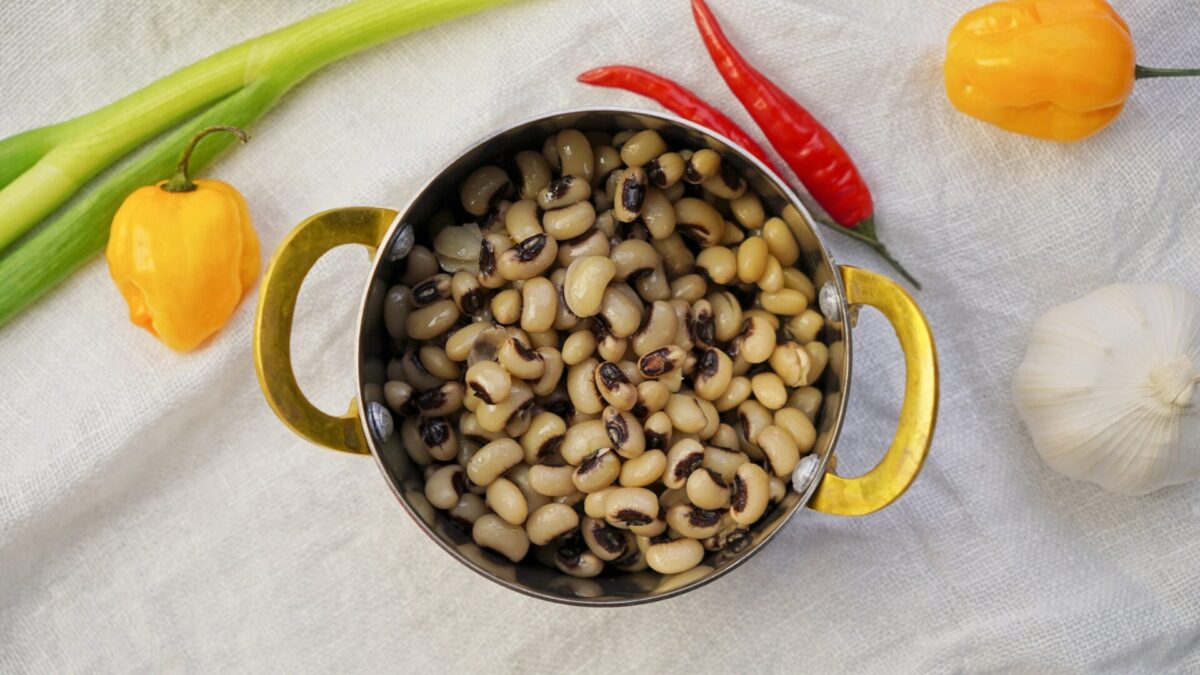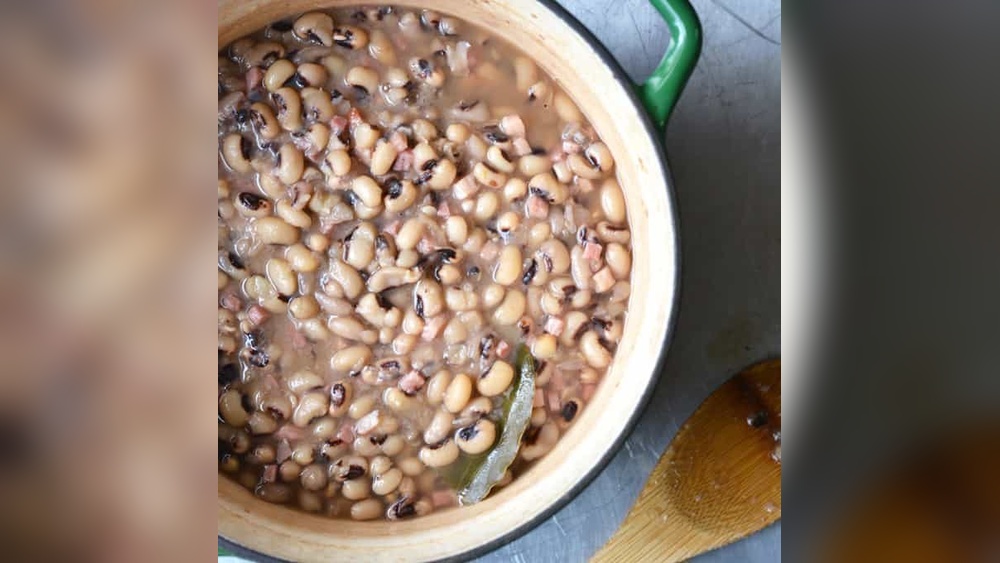Are you ready to enjoy delicious black-eyed peas but don’t have time to soak them beforehand? You’re not alone.
Many people believe soaking is a must, but what if you could skip this step and still get perfectly cooked, tender peas? Cooking black-eyed peas without soaking saves you time and effort, making it easier to whip up a hearty meal whenever you want.
In this guide, you’ll discover simple, effective methods to cook black-eyed peas straight from dry—no soaking needed. Keep reading to unlock the secrets to quick, flavorful black-eyed peas that fit right into your busy lifestyle.

No-soak Cooking Basics
Skipping soaking saves time but needs careful steps. Black-eyed peas cook well without soaking if they are fresh and high quality. Choose peas that are dry, smooth, and uniform in color. Avoid wrinkled or broken peas as they may not soften properly.
Use a large pot or pressure cooker for even cooking. A heavy-bottomed pot helps prevent burning. Add enough water to cover peas by at least two inches. Bring water to a rolling boil before lowering heat to simmer. Stir occasionally and check water level to keep peas covered.
Cooking time is longer without soaking, usually around 45 to 60 minutes. Using a pressure cooker can reduce this time. Salt the peas only after they begin to soften to avoid tough skins.
Prep Steps Before Cooking
Rinsing black-eyed peas removes dust and dirt. Place peas in a colander. Run cold water over them for a minute. Stir with your hand to clean well.
Sorting is important. Spread peas on a flat surface. Look for small stones, broken peas, or shriveled ones. Take these out carefully before cooking.
Removing debris helps stop grit in your pot. This step keeps your dish tasty and safe to eat. Clean peas cook evenly and taste better.
Stovetop Method
Start by rinsing the black-eyed peas well under cold water. Place them in a pot and cover with about 3 cups of water for each cup of peas. Bring the water to a rolling boil on high heat. Once boiling, reduce the heat to low and let the peas simmer gently. Keep the pot partially covered to prevent water loss.
Check the water level often. Add more hot water if peas look dry or water is low. The peas should always be covered by at least an inch of water during cooking. Stir occasionally to avoid sticking.
Cooking time varies but generally takes about 45 to 60 minutes. Test the peas by tasting; they should be soft but not mushy. If peas are still hard, continue simmering and check every 10 minutes. Drain excess water once cooked.
Instant Pot Method
Set the Instant Pot to high pressure for 20-25 minutes. This timing cooks black-eyed peas perfectly without soaking. Use natural release to avoid splitting the peas and keep them creamy. Let the pressure drop on its own for about 10-15 minutes before opening.
For a quicker method, use quick release, but peas might be a bit firmer. Natural release gives peas time to absorb flavors fully, making them tastier.
Add seasonings, herbs, and broth directly into the pot before cooking. This infuses the peas with rich flavor during pressure cooking. Garlic, onion, bay leaves, and smoked paprika work great.
Slow Cooker Method
Use the slow cooker to cook black-eyed peas without soaking. Choose between low or high settings. The low setting takes about 6 to 8 hours. The high setting cooks peas in 3 to 4 hours. Cooking on low keeps peas soft and creamy. High heat works faster but needs more attention.
Start by adding dry black-eyed peas to the slow cooker. Pour in enough water or broth to cover peas by 2 inches. Include flavor with onions, garlic, or spices. Avoid adding salt early; it can make peas tough. Add salt near the end of cooking for best taste.
Check peas after 3 hours on high or 6 hours on low. Stir gently and test for tenderness. Continue cooking if peas feel firm. Keep an eye to avoid overcooking and mushy texture. Once soft, peas are ready to serve or use in recipes.

Flavor Boosters
Using broth or stock instead of water adds rich flavor to black-eyed peas. Chicken or vegetable broth works best. These liquids give a natural savory taste that plain water cannot match.
Herbs like bay leaves, thyme, and rosemary bring fresh aroma. Spices such as black pepper, paprika, and cumin add warmth and depth. Use small amounts to avoid overpowering the peas.
Smoked meats like ham hocks or bacon create a smoky, hearty flavor. Smoked vegetables such as chipotle peppers or smoked paprika also work well. These ingredients enhance the dish with a subtle, rich taste.
Troubleshooting Common Issues
Undercooked or hard peas happen when cooking time is too short. Increase cooking time in small steps. Use fresh peas for best results. Hard water can also make peas tough. Adding a pinch of baking soda helps soften them quickly.
Overcooked and mushy peas occur if cooking goes too long. Check peas often to avoid this. Remove from heat as soon as they are tender but still hold shape. Mushy peas lose texture and do not taste good.
Foam and overflow form during boiling. Skim foam off the top with a spoon. Use a larger pot to prevent spills. Lower the heat to a gentle simmer after boiling starts. This controls foam and keeps the pot clean.
Serving Suggestions
Traditional Southern Style black-eyed peas are often served with ham hocks or smoked turkey. The peas are cooked slowly with onions, garlic, and creole seasoning to add deep flavor. Serve with cornbread or white rice to complete the meal.
Vegan and Vegetarian Options use vegetable broth instead of meat stock. Add smoked paprika or liquid smoke to keep a rich taste. Toss in chopped kale or collard greens for extra nutrition and color.
| Side Dish | Description |
|---|---|
| Cornbread | Sweet or savory, it pairs well with black-eyed peas. |
| Rice | Simple white or brown rice balances the flavors. |
| Greens | Collard or mustard greens add a fresh, slightly bitter taste. |
| Fried Okra | Crispy and crunchy, a classic Southern side. |

Frequently Asked Questions
Can You Cook Dry Black-eyed Peas Without Soaking?
Yes, you can cook dry black-eyed peas without soaking. Just rinse them and increase cooking time by 30-45 minutes.
How To Cook Black-eyed Peas From Dry?
Rinse dry black-eyed peas and soak overnight or use quick soak by boiling for 2 minutes. Drain and cook in fresh water until tender, about 45-60 minutes. Add seasoning as desired.
Is It Okay To Cook Black Beans Without Soaking?
Yes, you can cook black beans without soaking. It will take longer, usually 1. 5 to 2 hours. Soaking reduces cooking time and improves digestibility.
Do I Need To Soak My Black-eyed Peas Before I Cook Them?
Soaking black-eyed peas is optional. It reduces cooking time and improves digestibility. Without soaking, cook peas longer until tender.
Conclusion
Cooking black-eyed peas without soaking saves time and effort. Use fresh peas and enough water for best results. Keep the heat steady and check peas often for tenderness. This simple method works well for many dishes. Enjoy your flavorful black-eyed peas without the wait.
Give it a try and taste the difference!

